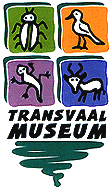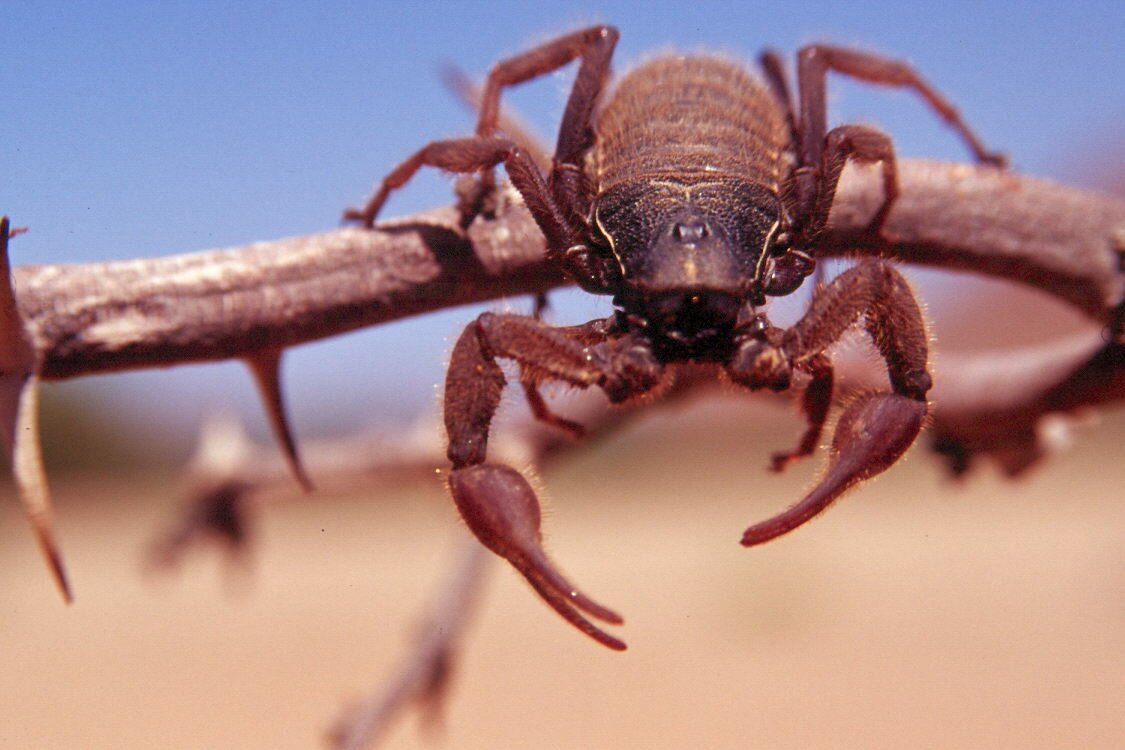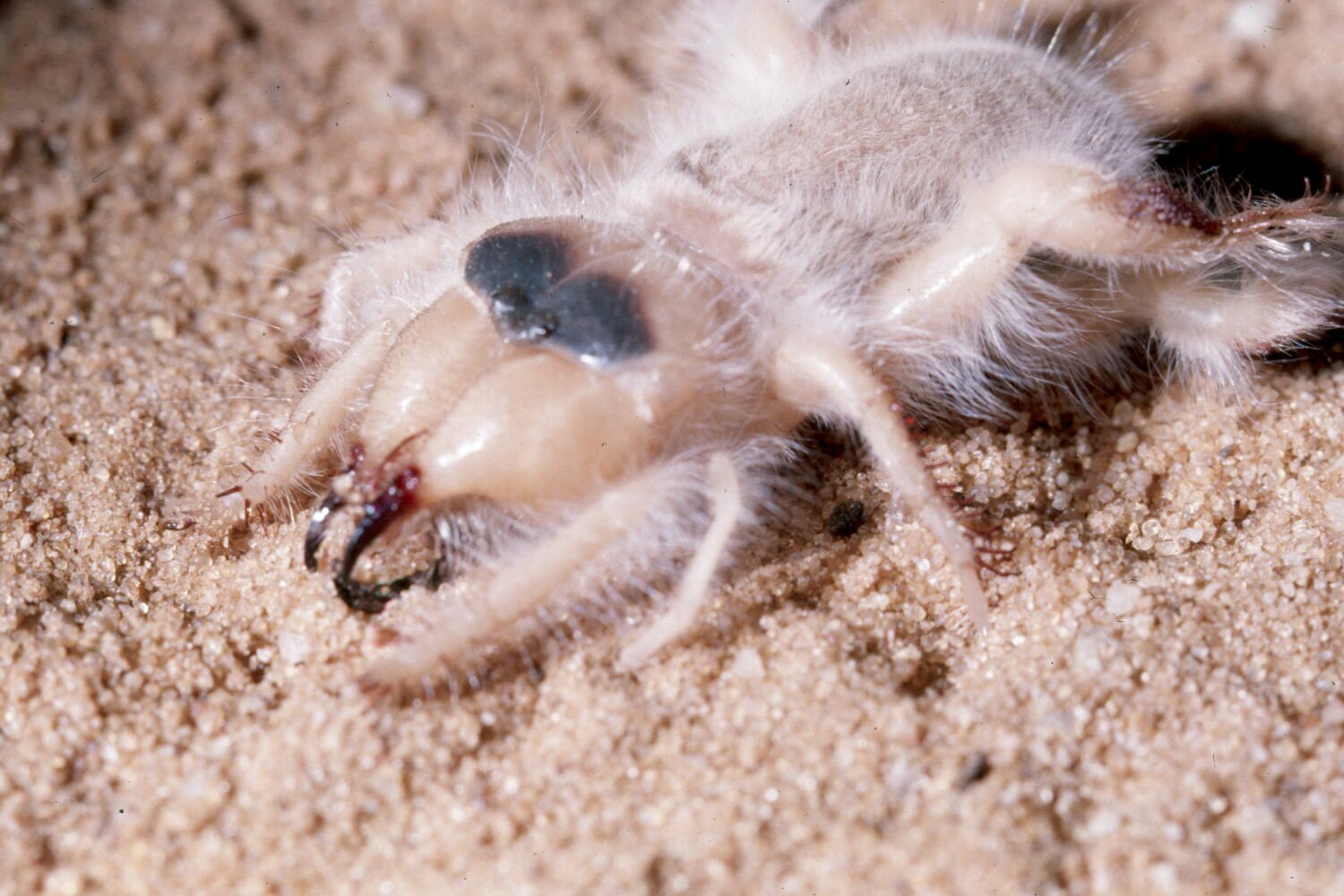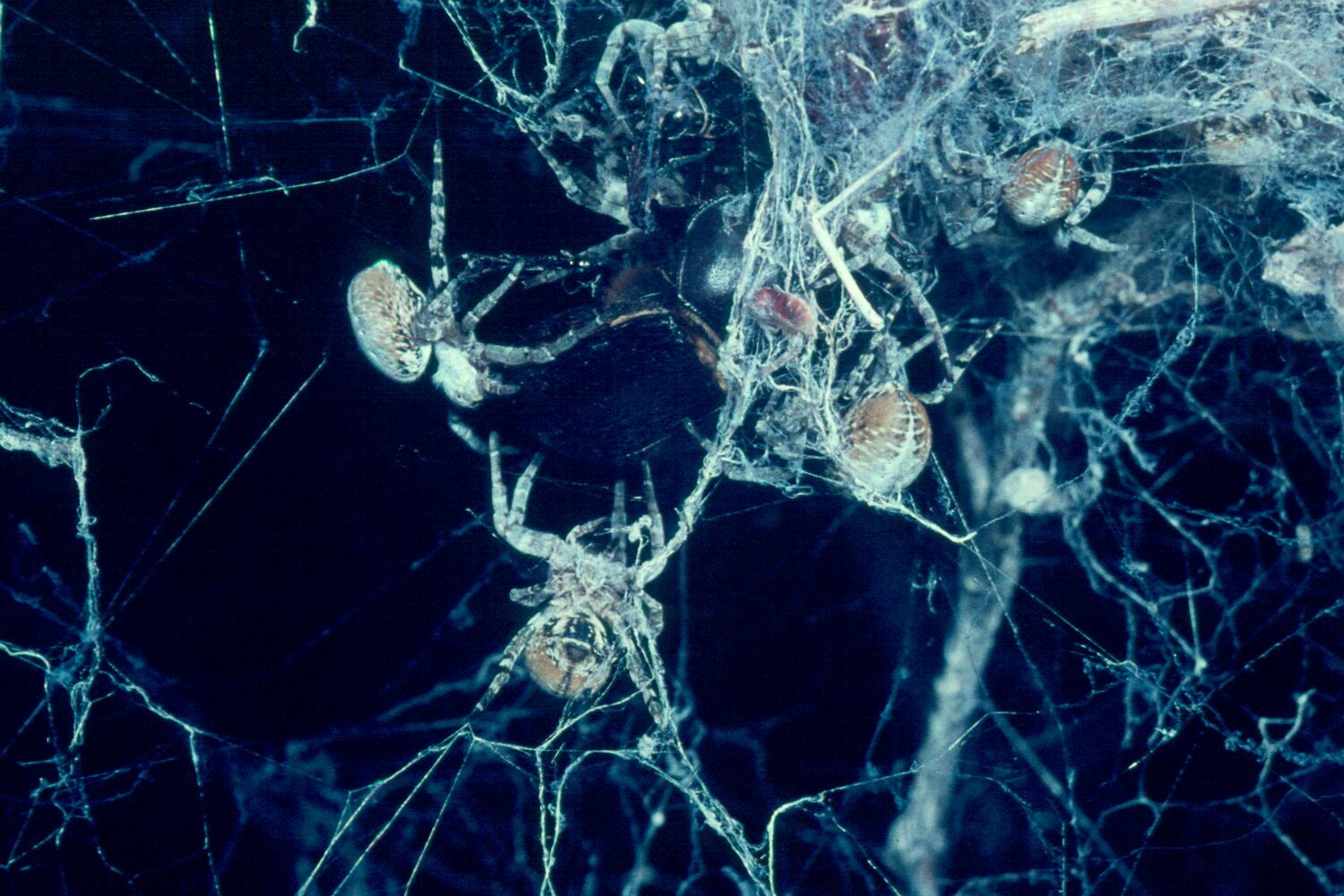
E - MAIL
Collection manager (Invertebrates)
Preparator
LINKS
Visit the site dedicated
to the locally infamous
Entomology Links
Transvaal Museum index
Department of Invertebrates
General Enthomology Collection
Class Arachnida (Spiders & Scorpions)
The Department of Invertebrates is responsible for research and curation of all invertebrate collections at the museum. The Department consists of Arachnida, Coleoptera, Hymenoptera, Lepidoptera, Odonata and Orthoptera collections.

|
Class Arachnida |
 |
Spiders are widely admired for the way in which they use silken threads to spin webs. The name Arachnidae, the class in the animal kingdom to which all spiders belong is derived from the Greek word arachne, which means "spiders". Classification of spiders according to their habitat are as follow: Ground-living, Burrow-living, Free-living ground spiders, Plant-living, Grass dwellers, Bark dwellers, Seed dwellers, Foliage dwellers, Flower dwellers, Web-living spiders, Tunnel webs, Sheet webs, Cast webs and Swing webs.
Worldwide approximately 30 000 spider species have been formally described to date. The Arachnida also includes a diverse array of smaller groups, including scorpions (1200 species), whip scorpions (100 species), palpigrades (60 species), pseudoscorpions (2000 species), solpugids (900 species), and harvestmen (5000 species). Nearly all species are terrestrial. In southern Africa, which has a rich spider fauna, about 5000 different species belonging to 66 different families are found. A thorough knowledge of the taxonomy, biology and ecology of southern African spider fauna by itself is a lifetime work. A review of our spider fauna using the formal taxonomic framework, which reflects evolutionary relationships, will be voluminous.
Arachnids have a pair of tagmata called a prosoma and opisthosoma. The prosoma is partially or completely covered with a carapace-like shield. The opisthosoma may be segmented or unsegmented. The appendages on the opithosoma are absent or modified, being used as spinnerets (spiders) or pectines (probably sensory in function, found in scorpions). Respiration is via tracheae or book lungs; it is cutaneous in many small arachnids.
![]() Visit the Big 12 African Insects page - click
Visit the Big 12 African Insects page - click
![]() Collecting and Preserving Insects: an online manual - click
Collecting and Preserving Insects: an online manual - click
![]() Scorpion eating Hissing cockroach - click
Scorpion eating Hissing cockroach - click
![]() Spider eats snake - click
Spider eats snake - click
The World Spider Catalog, Version 5.5
by Norman I. Platnick
is now up and running.
http://research.amnh.org/entomology/spiders/catalog/index.html

Order Scorpiones - Scorpions
Order Amblypygi - Whipscorpions
Order Araneae - Spiders
Order Solifugae - Solifuges
The Acari (unranked, but within Class Arachnida) includes the following orders:
Parasitiformes -- ticks and parasitiform mites
Acariformes -- acariform mites
 |
Solifugae (Solpugida) -- sun "spiders", wind "scorpions". This animal is not a true spider (Araneae). The pedipalps are slender and leg-like, so the solifuges appear to have five pairs of legs instead of the normal arachnid complement of four pairs. Although the solifugid is non-venomous, its strong jaws can give a nasty bite. It tends to give people a fright as it will run towards you to stay out of the harsh sunlight and try and keep in ones shadow. |
|
Social Spiders |
|
